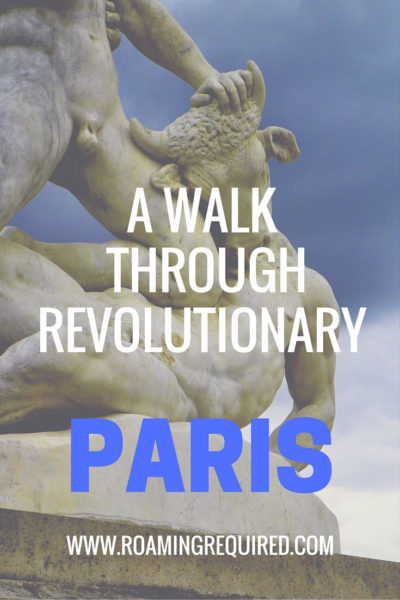Last updated: 29 July 2023
How much do you know about the history of Paris and the French Revolution? I’ll be the first to admit that before embarking on our Revolutionary Paris tour my understanding of French history could be best summed up by a rendition of Do You Hear the People Sing from Les Miserables and a pretty infamous cake quote from Marie Antoinette….
Suffice to say, a tour through French history was very much needed. Luckily, our walking tour with Context Travel and our wonderful guide, Marie, gave us detailed insight into the complex history of the French Revolution. By the end of the tour, we might not have been experts but we definitely walked away with a new appreciation and understanding of French history.
Russell’s 5 Surprising Facts about the French Revolution
- The Original Bastille Prison
- The Storming of the Bastille
- Hotel Sully
- French Revolution: Highlights
- Dr Joseph-Ignace Guillotin
The Original Bastille Prison
It doesn’t exist anymore!
Standing at the busy Place de la Bastille roundabout watching the traffic go by, there’s no missing the large Corinthian-style column with a winged gold statue on top. My first thought was the Bastille was a lot smaller in real life than I expected… but it turned out that the column I was looking at was the Colonne de Juillet, built to commemorate the 1830 revolution.

The original Bastille prison, the one which was stormed on July 14 1789 and also the flashpoint for the start of the French Revolution, no longer exists. Marie informed us that nothing remains of the original Bastille prison but the roundabout and Colonne de Juillet are located where the Bastille once stood.
Fun Fact: The Marquis de Sade was once imprisoned in the Bastille. Yes, THAT Marquis de Sade…
The Storming of the Bastille
This started the French Revolution!
The Storming of the Bastille is an important event in French history and is recognised as the start of the French Revolution and is commemorated each year on Bastille Day (14 July). Bastille Day also commemorates the Fete de la Federation, a celebration of unity one year after the Storming of the Bastille.
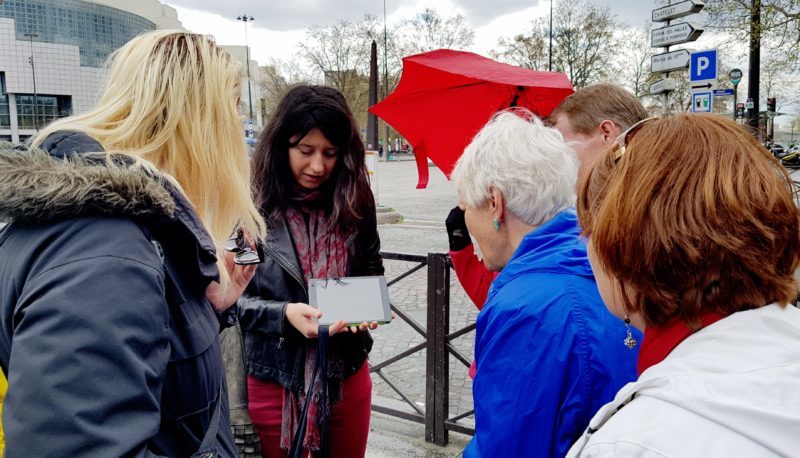
Our tour group stood in the middle of Place de la Bastille whilst Marie informed us of the events that occurred on the afternoon of 14 July 1789. The people of Paris, fearing for their lives amongst ongoing political turmoil, stormed the Bastille searching for ammunition and gunpowder.
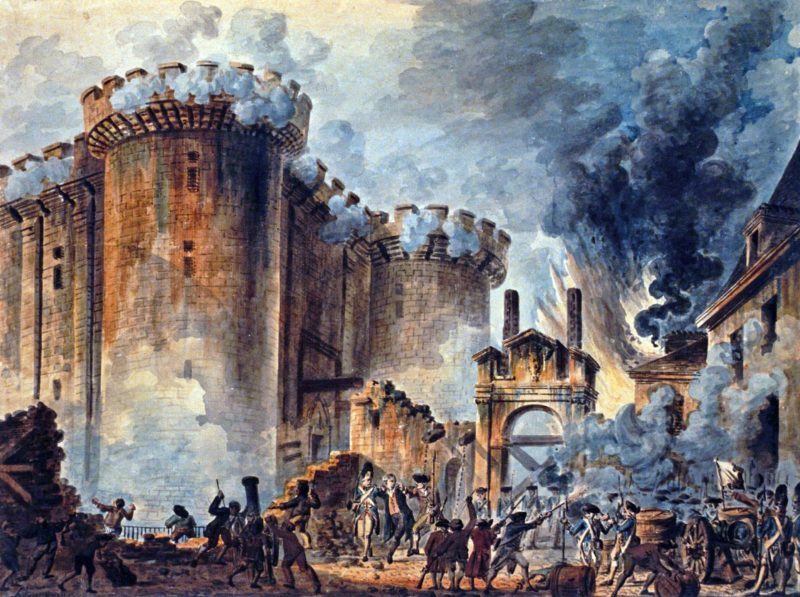
The Bastille housed a variety of prisoners within its thick walls but on the afternoon of the attack, there were only seven prisoners onsite. Marie informed us that the Commander of the Bastille, Governor de Launay, ordered his troops to fire to upon the crowd because he was loyal to the king and 800 people died.
Hotel du Sully
A great example of an Aristocratic Mansion
We paid a visit to Hotel du Sully, a great example of a 17th century Aristocratic house.
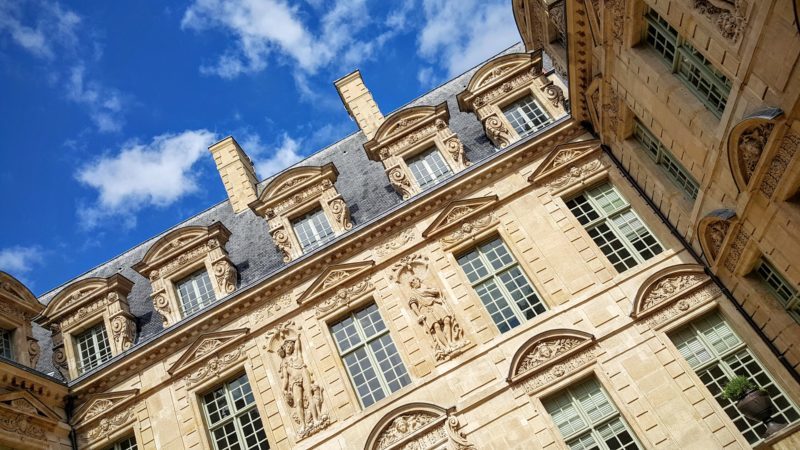
Hotel du Sully (hotel was the old name for house – House of Sully) was built in the 1620’s and is today as a popular tourist attraction because of its remarkable architectural style. Typical of its time, Hotel du Sully contains the aristocratic essentials – a large entry door, pronounced courtyard, and a large garden sitting behind the main house, reserved exclusively for family use.
When you take a walk through the back garden you discover one surprising addition, something that speaks to the wealth of the homeowners. An Orangery.
I’m sorry, a what? What’s an Orangery?
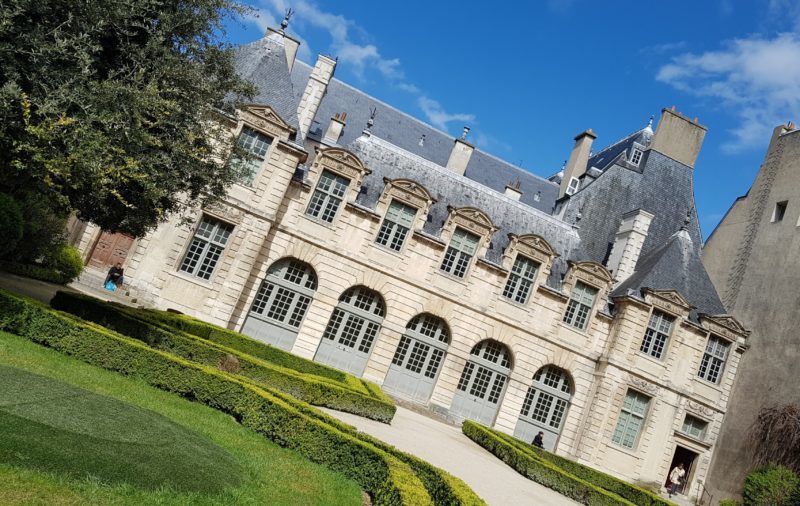
Think of an orangery as a greenhouse, a dedicated room in a household dedicated to the growing of oranges (and other citrus fruit trees) to protect them from the harsh winters outdoors. The ability to grow your own oranges was a symbol of the wealth and status of the homeowners. One of the most remarkable aspects of the Hotel du Sully was the size of the orangery. From a distance the large building looked like it had 2 floors but the building was designed with high windows to ensure sufficient light covered the trees.
This absolutely captured my imagination, a demonstration of wealth through orange trees. Amazing.
The French Revolution: Highlights
Once we finished our tour of the grounds at Hotel du Sully, we moved to the very tranquil park grounds of Place des Vosges. This was where Marie provided us with an overview of the French Revolution, its many causes, and the significant impact left in its wake.
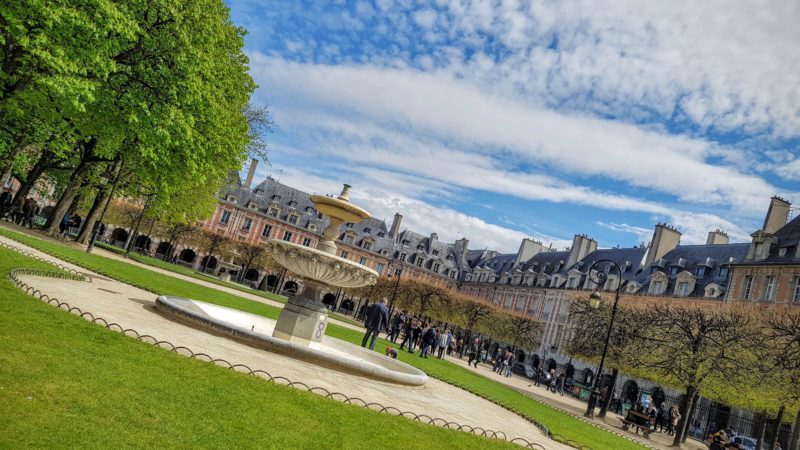
As someone who didn’t have a point of reference (outside of Les Miserables) of French history, I enjoyed Marie’s detailed overview, here is a couple of the highlights which I found most interesting;
Highlights
- King Louis XVI was sending arms to Americans during their War of Independence, in an effort to destabilise the British Empire. In order to do this, money was borrowed from Sweden.
- Poor harvest led to no income from taxes. Insufficient food supply lead to increased prices. The ripple effect was that no other goods could be purchased if basic food couldn’t be purchased.
- People were famished whilst businesses went bankrupt. Louis XVI desperately needed income which led to an increase of taxes.
- The public’s growing resentment towards to the aristocracy, nobility, and monarchy lead to the formation of the National Assembly and the start of the French Revolution.
- King Louie XVI, Marie Antoinette, and their family attempted to escape to Austria but were recognised and returned to Paris, under guard. This attempted escape led to charges of treason which ultimately results in their executions by guillotine
- Louie XVI was executed on January 21st 1793 and Marie Antoinette on October 21 1793 in Place de la Revolution (now known as Place de la Concorde)
- There is no evidence that Marie Antoinette ever uttered the famous quote; Let them eat cake.
Dr Joseph-Ignace Guillotin
You may not recognise the name but I’m certain that you recognise the part of his name – Guillotine. Yes, that’s right. Dr Guillotine is the “creator” of the very well-known method of execution synonymous with the French Revolution.
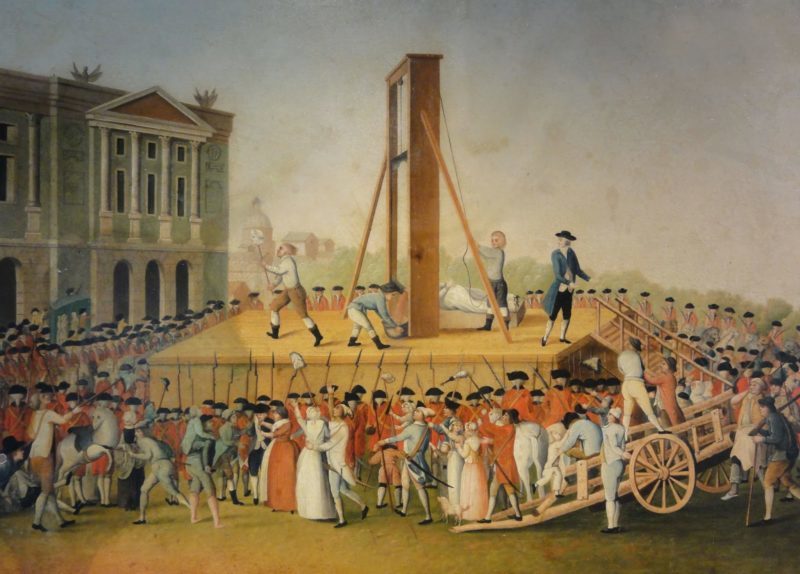
Ok, one thing you need to be aware of, Dr Guillotin didn’t actually create the Guillotine but did propose its use as a less painful method of execution in France. The idea was so widely welcomed that his name became attached to it.
Death by guillotine was once considered to be a noble method of execution which was reserved for the aristocrats and nobility. It was Dr Guillotin who believe that all people had the right to quick and painless death which is how it became to be used frequently during the revolutionary times.
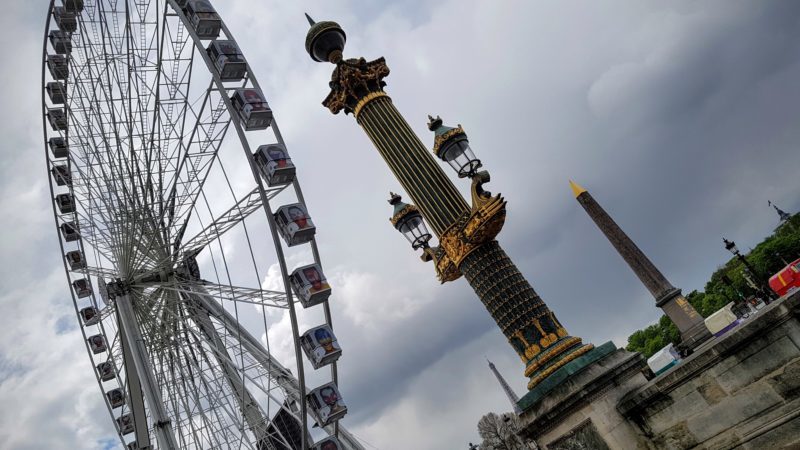
Fun fact: Public executions were held in what is now known as Place de la Concorde, a beautiful and very popular public area in Paris. Next time you visit Place de la Concorde spare a thought for the thousands who lost their heads during the French Revolution.
Final Thoughts
As you walk through the streets of Paris you’re treated to historical buildings, detailed architecture,and beautiful public parks. There’s also centuries of history just waiting to be discovered so make sure you add a Revolutionary Paris walking tour to your itinerary.
The Essentials
Revolutionary Paris with Context Travel
Cost: $90 pp
Duration: 3 hours
Bookings via Context Travel
Disclaimer: Roaming Required were guests of Context Travel during our Revolutionary Tour in Paris. All comments, opinions, and recommendations expressed in this post remain our own.
